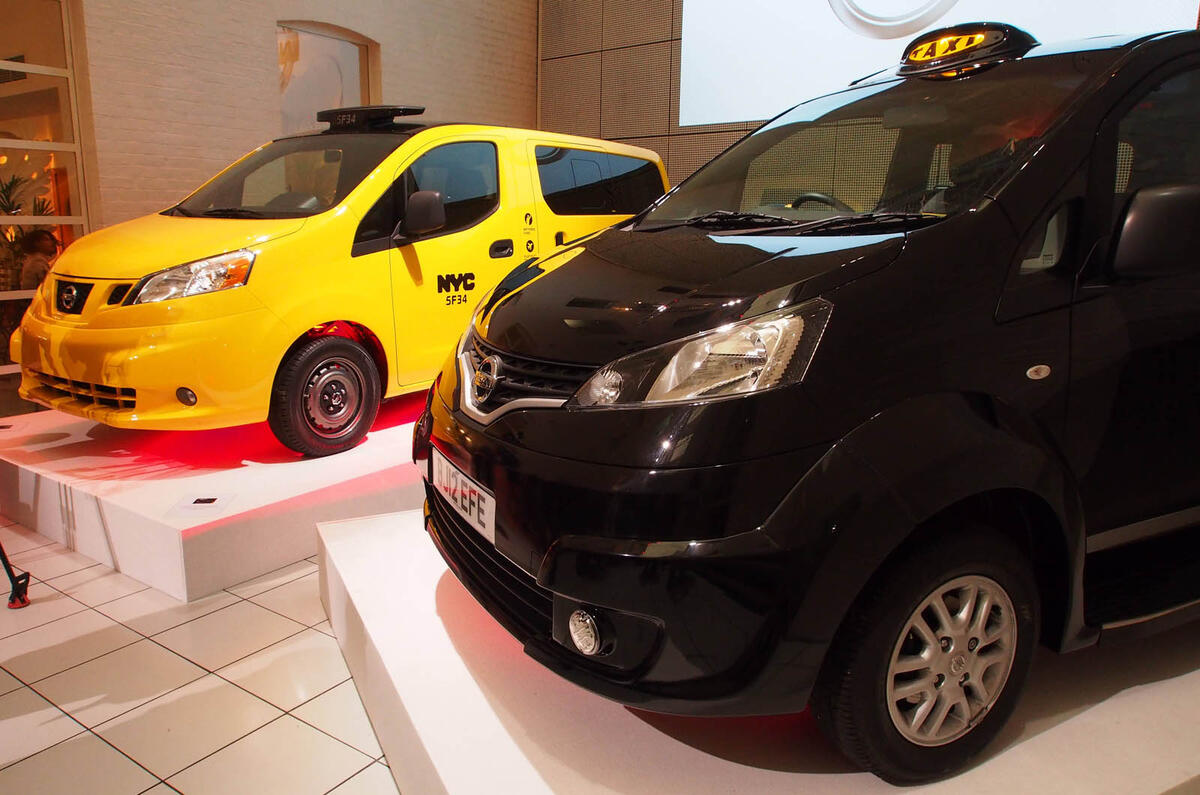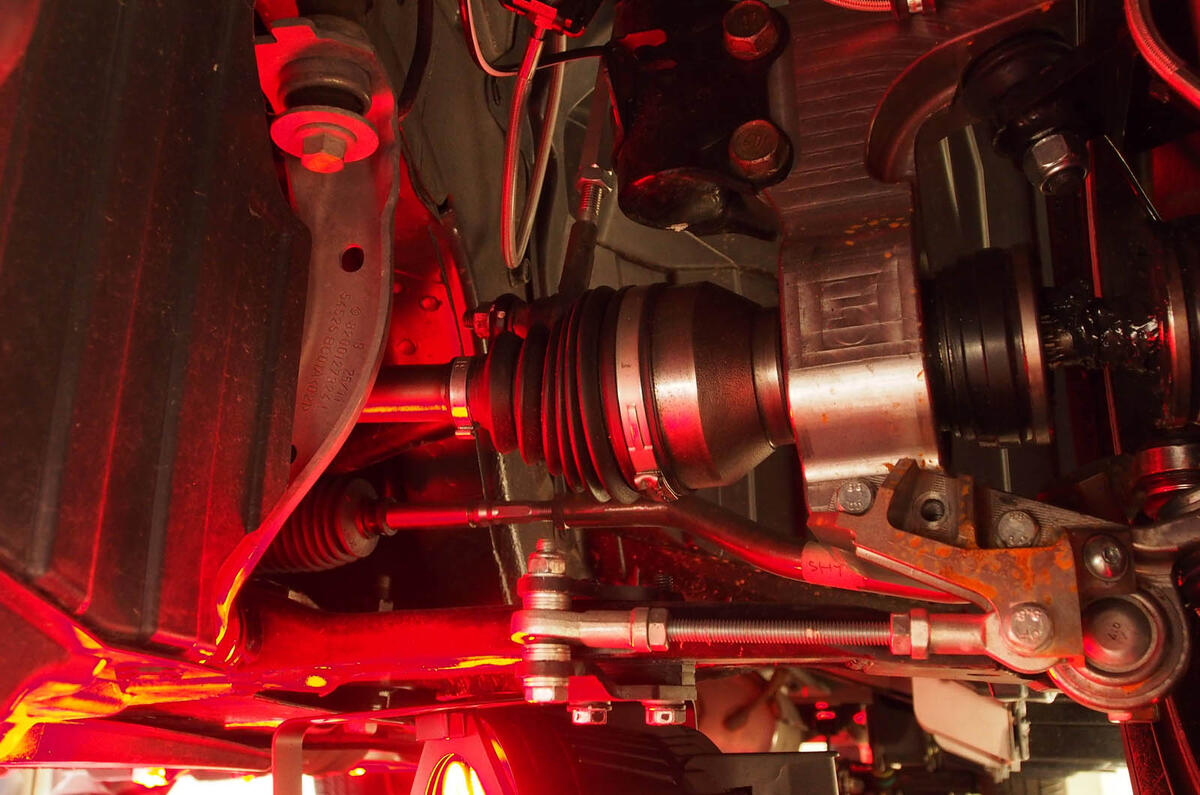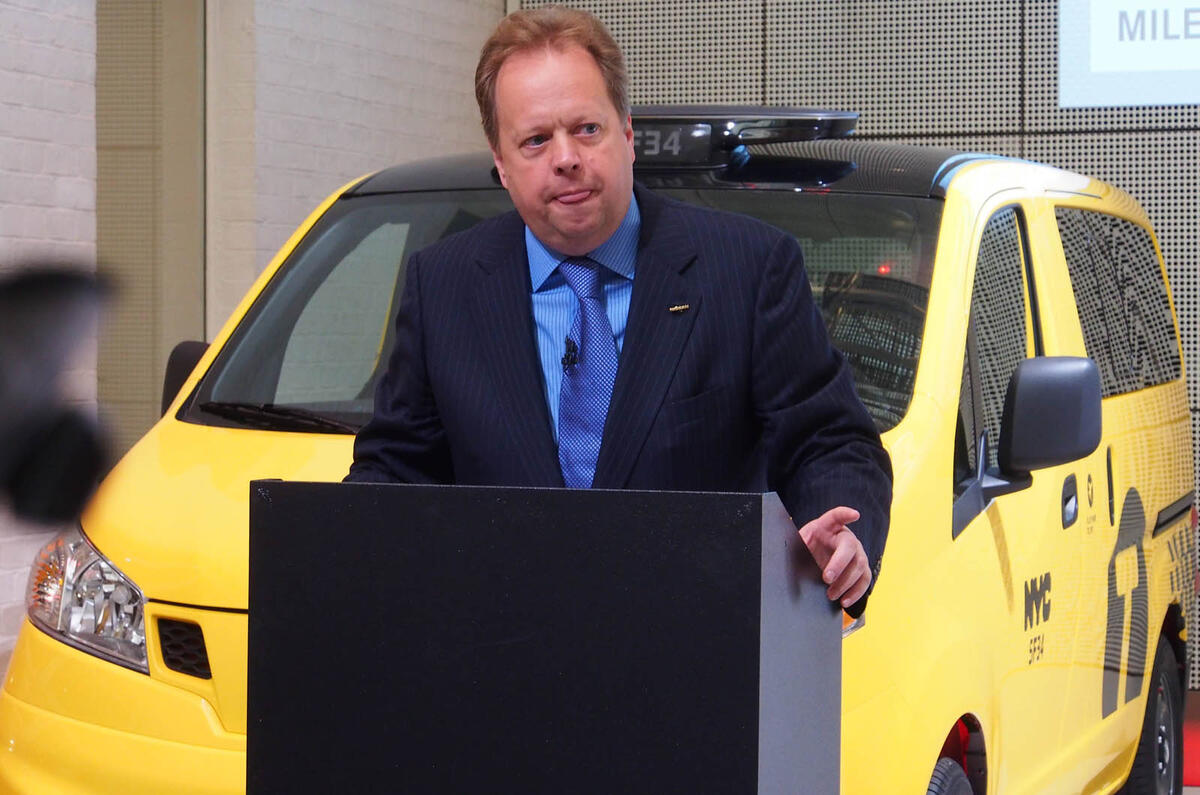This is the Nissan NV200, the Japanese firm's take on the classic London black cab which will go on sale in 12 month’s time. The new vehicle aims to both finally break the hold the classic LTI taxi has on the market and dramatically undercut the new Mercedes black cab on price.
Powered by a 1.5-litre, Euro V, diesel engine in either 90bhp or 110bhp guises, the new cab will be priced from £28,000. In manual transmission form, the NV200 is claimed to offer "50 per cent" better economy than today’s most economical London cab, which is expected to translate into a figure of around 42mpg. Nissan is also working on an automatic version of the new cab.
Nissan claims that this engine will save the average London cabbie about £1000 per year in fuel as well as seeing a significant reduction in particulate pollution. This is seen as essential by London Mayor Boris Johnson, because London blacks cabs travel around 230 million miles per year and, although there are only 22,000 black cabs on the road, they are responsible for 20 per cent of the particulate pollution in the capital.
Nissan will also begin testing an all-electric, battery-powered, version of this London cab in 2013. Nissan says it was inspired to break into the British market for London cabs after winning the competition to supply the new-generation taxi for New York, which is also based on the NV200 van.
Competition in the London cab market has been strictly limited because of the regulation that requires cabs to have a tight 25ft turning circle. Nissan has managed to achieve this in a front-drive vehicle by re-engineering the front suspension.
Bolted to the bottom of the NV200’s McPherson strut is a similar ‘wishbone’ attachment to that used on Vauxhall’s HiPer strut. The drive shaft is split into two, with a second universal joint mounted on the lower wishbone. This means the drive shaft attached to the front wheel is very short, allowing the wheels to turn to a much more acute angle than conventional front-drive vehicles can manage. This set-up means that the front track is now about 200mm wider than on the donor NV200 van.
Features include twin sliding doors to boost passenger access, and a ramp into the rear to enable easy wheelchair access.
Nissan sources say that they expect the normal UK-wide market for London cabs to significantly expand from today’s annual volumes of between 2000 and 3000 per year. New scrappage rules aimed at taking the most polluting vehicles off the market come into force in London. At the end of this month, any black cab over 15 years old will no long be able to be licenced for use.











Join the debate
Add your comment
TXn RIP
Once the NV200 is available I can't see the makers of TX4 having a viable business for much longer. Merc and Nissan market share will reach a critical point leaving no room for an inefficient, poorly built, outdated TX4. TXn had a monopoly on London for too long. They got complacent and neglected customer care.
What a porker
Can't they re-engineer the present black cab to meet regulations?
Still, at least black disguises the Nissan's lumpen styling.
New York is not so lucky - yellow reveals those looks much too easily.
The VW Up cab concept is better.
Wheelchair access
I read that wheelchair access is via the rear. Does this mean that this thing has twin doors at the rear rather than a tailgate or fixed rear window and a "boot"?
My wife is a wheelchair user and last year we switched from a Mercedes Viano with an internal rear wheelchair lift to a Volkswagen Caravelle with an underfloor side-entry wheelchair lift because we were constantly being blocked in/out by other motorists parking too close to enable deployment of the rear wheelchair lift. This was incredibly annoying and inconvenient (yes, there was a sticker stating that there was a wheelchair lift fitted on the rear window).
I therefore have to question the wisdom of designing a rear access taxi for use on busy London Streets - is it safe to unload a wheelchair user into the road, with the extra 3 metres requred for wheelchair ramps/ Would it not be safer and more equitable to have a side-entry cab like the FX4s etc.
Sorry Nissan, I think you've developed totally the wrong vehicle.